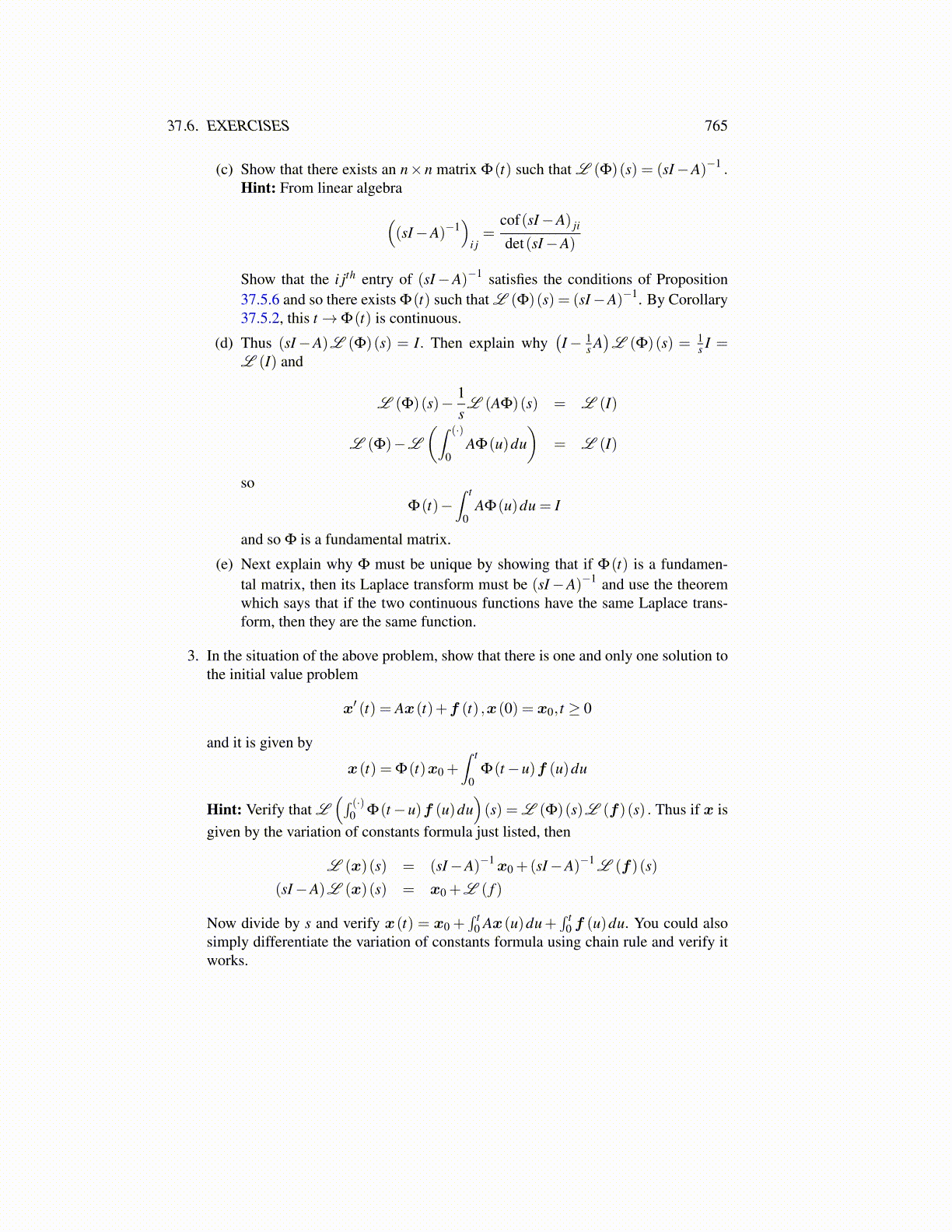
37.6. EXERCISES 765
(c) Show that there exists an n×n matrix Φ(t) such that L (Φ)(s) = (sI−A)−1 .Hint: From linear algebra(
(sI−A)−1)
i j=
cof(sI−A) ji
det(sI−A)
Show that the i jth entry of (sI−A)−1 satisfies the conditions of Proposition37.5.6 and so there exists Φ(t) such that L (Φ)(s) = (sI−A)−1. By Corollary37.5.2, this t→Φ(t) is continuous.
(d) Thus (sI−A)L (Φ)(s) = I. Then explain why(I− 1
s A)L (Φ)(s) = 1
s I =L (I) and
L (Φ)(s)− 1sL (AΦ)(s) = L (I)
L (Φ)−L
(∫ (·)
0AΦ(u)du
)= L (I)
soΦ(t)−
∫ t
0AΦ(u)du = I
and so Φ is a fundamental matrix.
(e) Next explain why Φ must be unique by showing that if Φ(t) is a fundamen-tal matrix, then its Laplace transform must be (sI−A)−1 and use the theoremwhich says that if the two continuous functions have the same Laplace trans-form, then they are the same function.
3. In the situation of the above problem, show that there is one and only one solution tothe initial value problem
x′ (t) = Ax(t)+f (t) ,x(0) = x0, t ≥ 0
and it is given by
x(t) = Φ(t)x0 +∫ t
0Φ(t−u)f (u)du
Hint: Verify that L(∫ (·)
0 Φ(t−u)f (u)du)(s) = L (Φ)(s)L (f)(s) . Thus if x is
given by the variation of constants formula just listed, then
L (x)(s) = (sI−A)−1x0 +(sI−A)−1 L (f)(s)
(sI−A)L (x)(s) = x0 +L ( f )
Now divide by s and verify x(t) = x0 +∫ t
0 Ax(u)du+∫ t
0 f (u)du. You could alsosimply differentiate the variation of constants formula using chain rule and verify itworks.